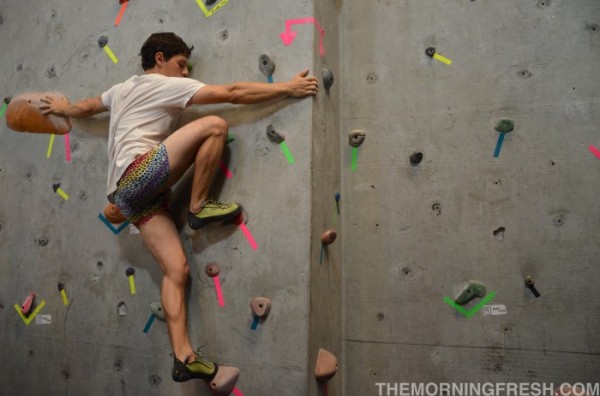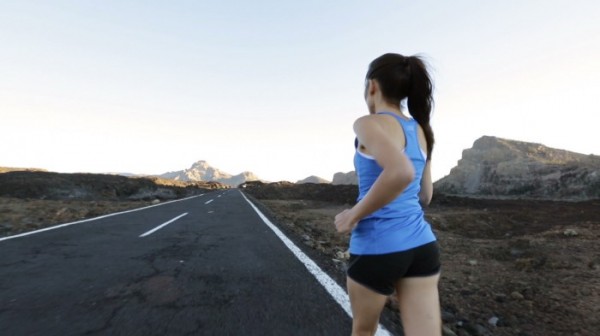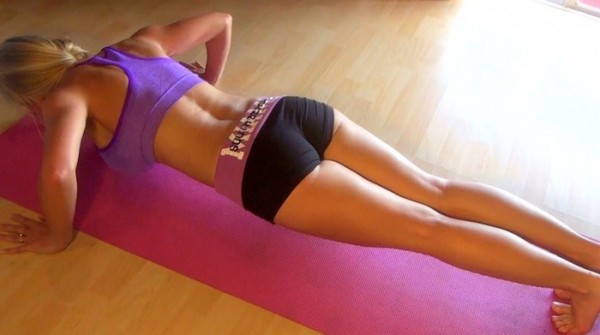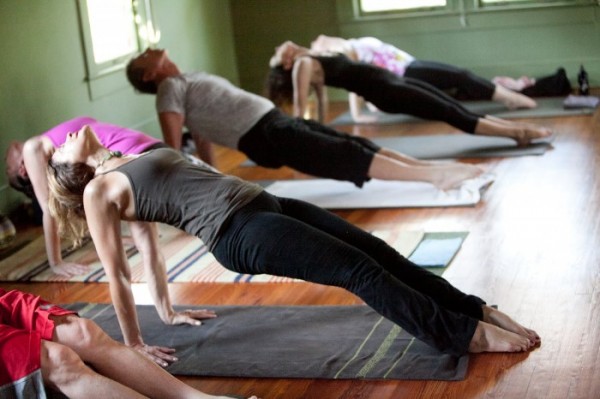Not all of us are lucky enough to live the dirtbag lifestyle, climbing outdoor rock on a daily basis. For those of us tied down by, you know, bills, careers, families, school or other obligations, it’s important for us to keep up — or even increase — our strength and technique at our local gyms. That way, when we hit the outdoor routes on the weekends, we’re ready to climb, send and conquer. Here are 7 indoor rock climbing gym workouts to practice at the local walls and get you ready to hit the crags.
1. Build endurance by traversing the gym.

One of the fastest ways to build strength, technique and endurance is to traverse around the entire gym or bouldering cave. Set a stopwatch and climb. Focus on moving smoothly the entire time and continuously keep on climbing. Because you want to emphasize proper technique, don’t climb until the point of total exhaustion. Instead, work until you start to notice your hands and feet getting sloppy. Call it quits and try it again in another couple days. Remember, it doesn’t really matter how challenging the moves are as long as you’re continuously moving. Make it your goal to increase your minutes on the wall every single time you practice this traverse exercise.
2. Grow strength on a campus board.
Legend has it that the famous sport climber Wolfgang Gullich invented campus boards when he installed the first at his gym, “the Campus Center” (hence the name) in the late 80s. Since then, climbers have used the boards to build finger, arm and core strength by ascending and descending them using only their hands. To get started on one at your own gym, hang, with your fingertips, from the lowest slab. Engage your core and lift your bodyweight up until you’re able to grab the next slab with one hand. Repeat, using alternating hands, until you work your way to the top. If that’s too challenging, try beginning from the top and working your way down, slot by slot, in a controlled descent. Then, when you’re stronger you can aim for an ascent. As you advance, you can begin to go for longer reaches by skipping a slot or two between each grab.
3. Perfect your hand technique by practicing weight distribution through different holds.
One of the most important parts of climbing is knowing which holds require which type of grip and using your knowledge (and fast reflexes) to adapt quickly to new routes and problems. The Self-Coached Climber by Dan M. Hague and Douglas Hunter suggests building strength and technique on several types of holds. Some of the more challenging, yet most important holds to practice include:
- Slopers: These are generally large holds with smooth, yet fairly gradual angles. They often require using a flat, full hand and grabbing the hold as close to the wall as possible. It can also be helpful to position your weight under the sloper, keeping it as low as possible.
- Pockets: Named after their shape, these are often easy to grab, creating little bowls for your fingers to reach inside. However, they almost always only allow enough room for less than four fingers. The more challenging ones only fit a finger or two though. To practice these, work on your finger strength, choosing your strongest fingers to support your weight, careful to build strength in an effort to avoid injuries.
- Pinchers: A pinch, or pincher, requires you to use your fingers and thumb in opposition, creating a claw-like grip. Because fingers are often stronger than a single thumb, try to position your weight across from your fingers so that they are forced to bear most of the weight through opposition.
- Crimpers: Crimpers are tiny, horizontal notches in the rock, with a small ledge just big enough to fit your fingertips. They’re usually cut at a 90-degree angle. Because it can be tough to hold your entire weight on only your fingertips, try practicing these by laying your thumb flat across your fingertips, pressing down to provide extra security and strength.
4. Get into some fancy footwork by climbing without your hands.
One of the most common mistakes beginner climbers make is trying to drag themselves up the wall with their arms, not realizing that focusing on footwork creates a more efficient use of energy. But you don’t have to be a beginner to work on improving the way your feet climb. One way to force yourself to really focus on your lower half is to climb with a tennis ball in each hand, rolling along the wall. This way, you can still lean and balance against the wall, putting weight in your hands, but your feet will have to do all of the fancy work. Focus especially on using your toes, the most flexible, and therefore versatile, part of your foot.
5. Run.

Even if you’ve never logged more than a couple miles in your life, running can help improve your climbing endurance. These days, most major gyms offer a treadmill or two, along with some free weights, so take full advantage of these amenities! If you’re a total beginner, start out by setting small goals for yourself or even doing a combination of running and walking. Hate pounding along on a treadmill? Ditch your gym for the great outdoors and feel the wind in your hair and the pavement (or even better, trails) under your feet.
6. End your climbs with pushups.

All of that pulling yourself up the wall can be exhausting on your muscles, so, according to instructors at Earth Treks in Maryland, it’s important to end your climbing workout with the opposite motion. The perfect opposite to pulling? Pushing. Not only are pushups great for your arms and legs, but they’ll work your entire core, which is vital to becoming a stronger climber. It doesn’t matter if you can do five or 50. Challenge yourself, power through and end your climb session on a high note.
7. Get your yoga on.

Yoga helps climbers increase flexibility, build strength and work on their mental focus. That’s why more and more gyms are starting to offer classes to their members. Sign up for a class, enjoy yourself and try to practice at least a couple times each week. Namaste to that!
- 5 Must-Have Apps for Rock Climbers - 30 September, 2014
- 5 Ways Rock Climbers Make The World A Better Place - 15 September, 2014
- How to Plan a Micro-Adventure on Your Bike - 28 August, 2014

